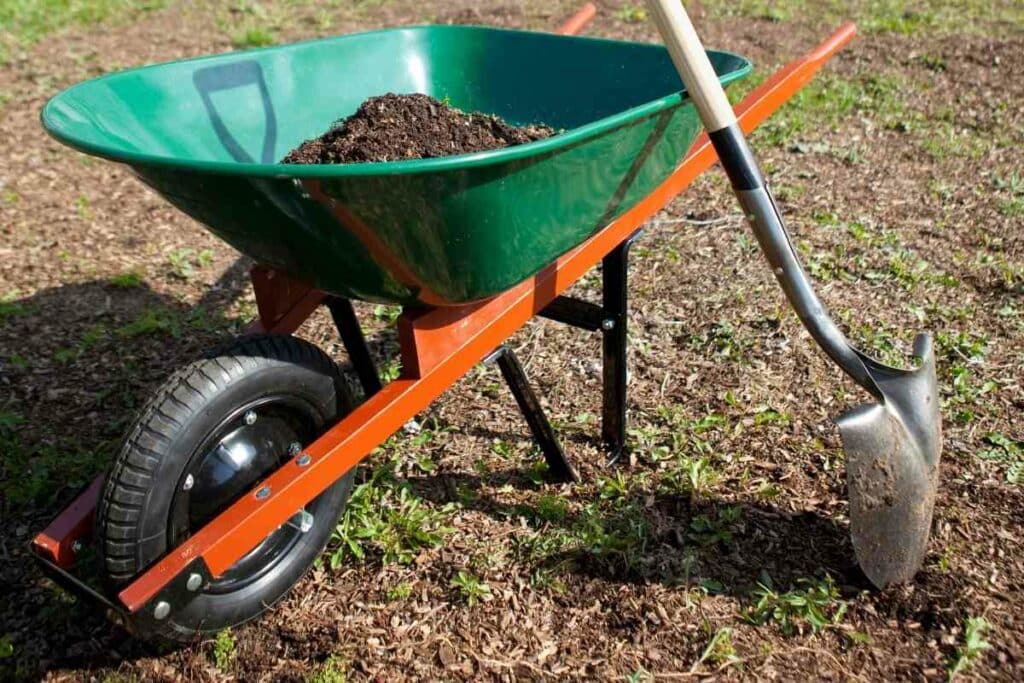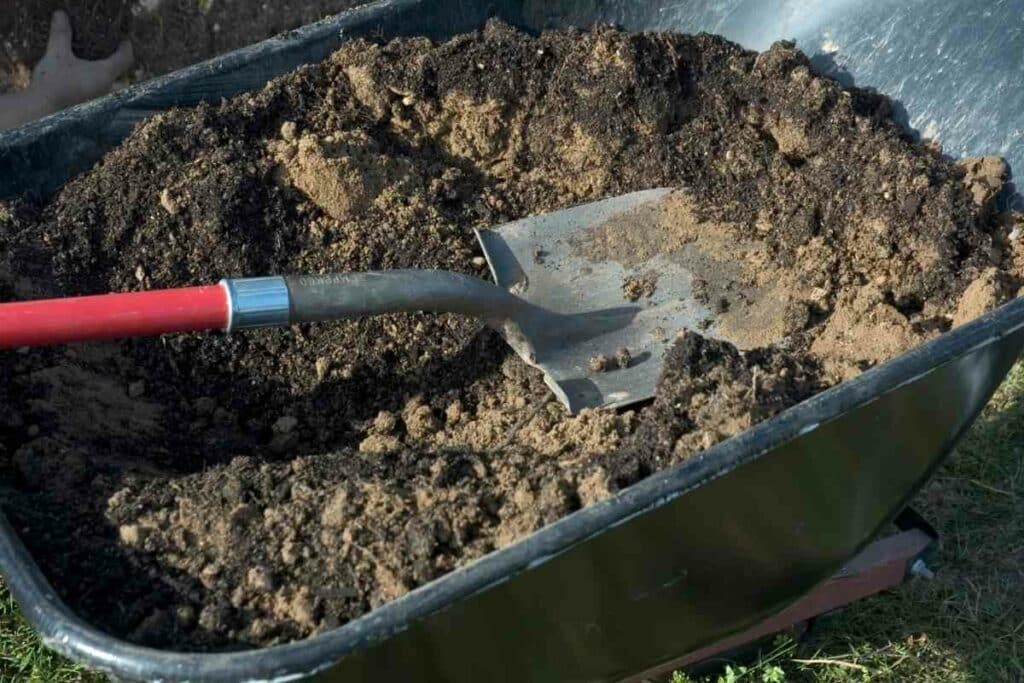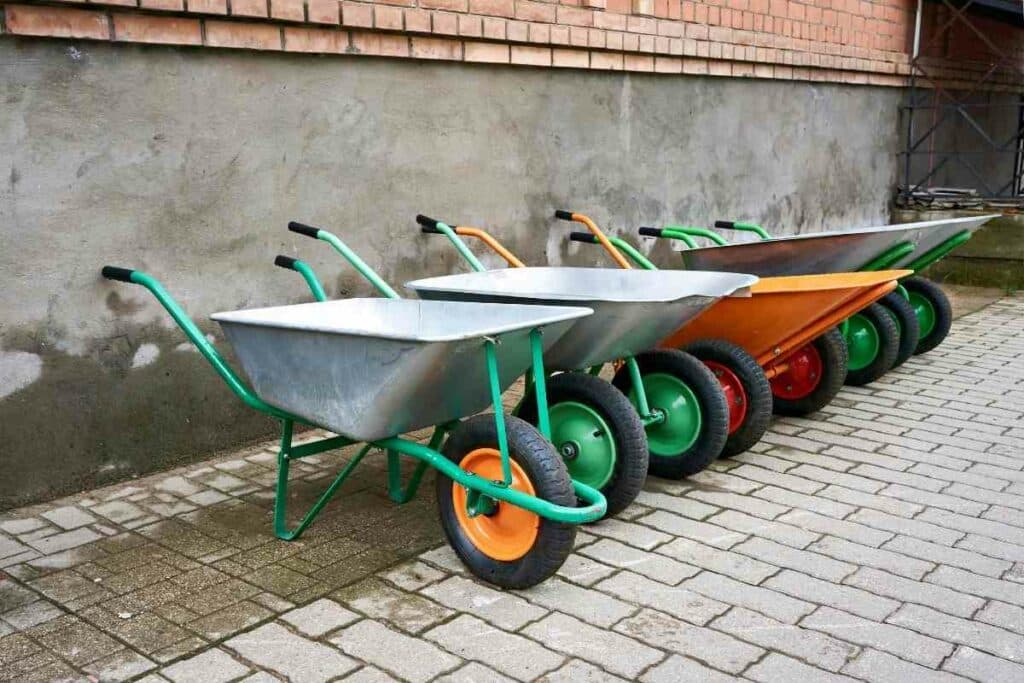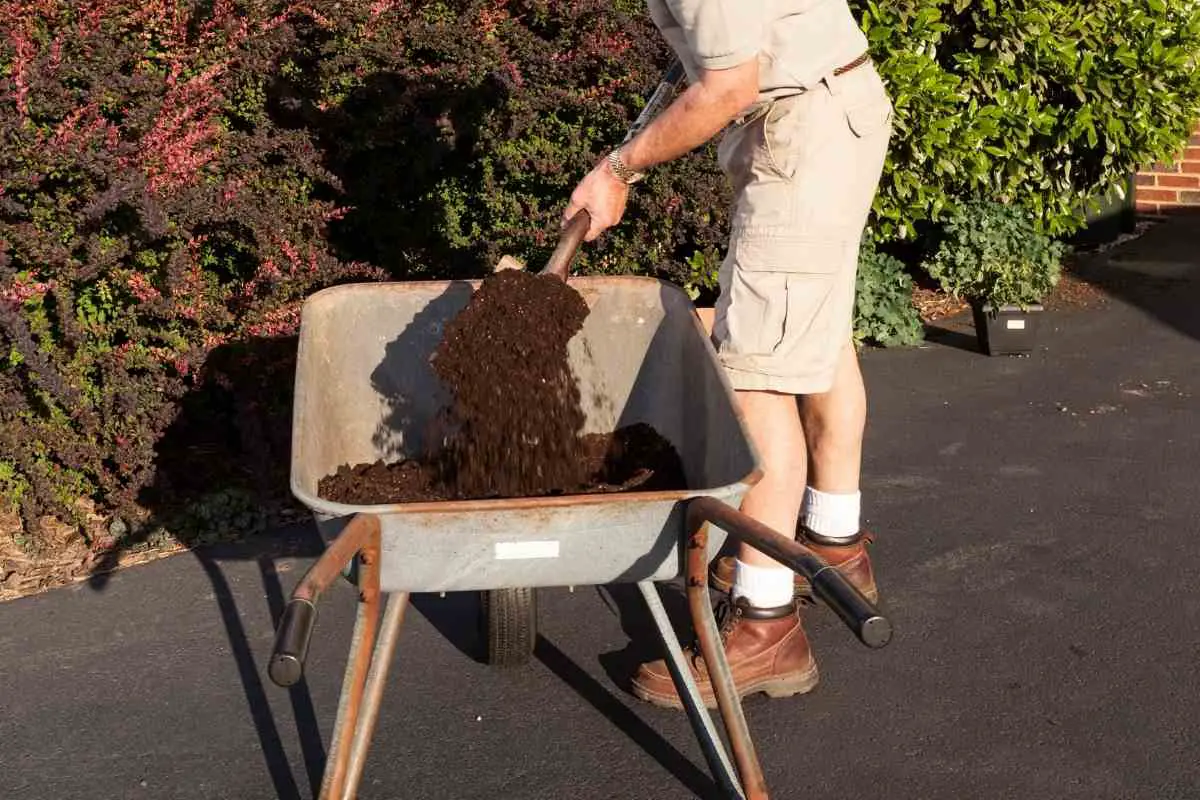Wheelbarrows significantly minimize the amount of physical labor and effort needed to carry out any task.
They are effective at load distribution, making it considerably easier to transport huge, heavy cargo.
If you do a lot of gardening or landscaping around the house, you understand how useful and efficient a wheelbarrow can be.
When it comes to moving dirt around the yard, knowing how much soil your wheelbarrow can handle helps reduce the number of trips you need to make.
If you want to cover a specific area of your yard with dirt, knowing the capacity of your wheelbarrow will also inform you how many full loads you’ll need.
Key Takeaway – Wheelbarrows come in different sizes, ranging from 2 cubic feet to considerably greater capacities, such as 6 cubic feet for a contractor-grade wheelbarrow.
A normal garden wheelbarrow with a deep basin contains about 3 cubic feet; smaller ones generally hold around 2 cubic feet.
What Is The Capacity Of A Wheelbarrow?
For a wheelbarrow to be useful, one person has to be able to lift and move it comfortably.
That is why while wheelbarrows vary in size and volume, they seldom contain more than ten cubic feet.

As such, it is essential for you to consider the size of the wheelbarrow. Remember a larger one might not always be preferable if it is difficult to carry or lift.
However, if you can, something with a greater capacity might mean fewer journeys, which can add up quickly if you have a lot of terrains to cover.
A basic wheelbarrow has a capacity of 100 liters, dimensions of 80 cm long, 60 cm broad, and a depth of 20 cm.
How To Calculate the Volume?
To calculate the volume of the square component of the wheelbarrow, multiply the length by the width by the depth. For example, 2 ft. long by 2 ft. wide by 2 ft. deep, equals eight cu ft.
That said, wheelbarrows are available in a number of sizes to handle various load sizes and purposes.
They range from 2 cubic feet, which is shallow, to 6 cubic feet, which is significantly deeper.

A typical garden wheelbarrow with a deep basin may hold up to 3 cubic feet, while shallower ones can handle up to 2 cubic feet.
Weight is an essential concern for wheelbarrow users. When empty, a normal wheelbarrow has a capacity of roughly eight cubic feet and weighs around 55 pounds.
To Avoid Damage – Never overload your wheelbarrow, even if it means the wheelbarrow isn’t completely filled.
Shallow tray wheelbarrows for gardening are typically 2 cubic feet in size and are ideal for general light to medium use in a home or landscaping setting.
Deep tray wheelbarrows are the same as shallow tray wheelbarrows, with the exception that the tray’s height will be intended to accommodate 3-6 cubic feet of mulch or other aggregate material.
In terms of a cubic meter, it depends on the size of the wheelbarrow.
A regular size full wheelbarrow has a capacity of roughly 0.10 cubic meters, and one cubic meter equals 1000 liters. In this respect, ten wheelbarrows fully produce one cubic meter.
Finally – Avoid overloading the wheelbarrow to the point where you can’t push it. If you push yourself harder than your body can handle, you risk injuring yourself.
What Is A Wheelbarrow Yard?
A cubic yard is the unit of measurement for garden materials such as mulch, soil, waste, and so on.
The volume or load capacity of a wheelbarrow is measured in cubic feet.
One cubic yard of cargo takes up 27 cubic feet of space.
This means that you can move one cubic yard of the soil in 14 cycles using a two cubic yard wheelbarrow. If this is a regular job, you’ll need a larger model.

A 2-cubic-foot wheelbarrow has 14 wheelbarrow loads in a cubic yard, while a 3-cubic-foot wheelbarrow has 9 wheelbarrow loads in a cubic yard.
The shallow basin of the smaller wheelbarrow is more prevalent, although the bigger version is more common.
Both wheelbarrows must have a crest for them to attain maximum capacity.
While there is some variation, most full-size dump trucks of materials have around 18 cubic yards, which is equivalent to 252 smaller wheelbarrow loads and 162 bigger wheelbarrow loads.
A truck loaded with dirt can weigh 20 tons or more, whereas a cubic yard of soil weighs around 1.3 tons.
Three cubic feet of topsoil, or one wheelbarrow load, weighs around 290 pounds, whereas two cubic feet weigh approximately 185 pounds.
It depends on the moisture content, but normally one cubic foot of soil weighs approximately 108lb, and an ordinary wheelbarrow is about 3-5 cubic feet.
Therefore, a wheelbarrow full of dirt is around 324 to 540 pounds on average. Three cubic feet is equivalent to 0.11 cubic yards.
If you want to fill a one cubic yard space using a regular three cubic foot wheelbarrow, you will need to make nine trips.
How Many Shovels Do You Need To Fill A Wheelbarrow?
In general, 5 to 6 full-size shovels can fill one cubic foot of material, whereas a standard wheelbarrow can contain 3 to 5 cubic feet.
Therefore, 15 to 30 shovels are required to fill a wheelbarrow. One cubic foot of moist, loose dirt equals approximately six full-size shovels. Actual coverage may differ.

A cubic yard of dirt is 3 ft. long, 3 ft. wide, and 3 ft. high; therefore, one cubic yard equals 27 cu ft.
Typically, 5 to 6 shovels full are required to heap up one cubic foot of dirt.
So, according to calculations, 135 to 162 shovels full of dirt are required to stack up one cubic yard of dirt.
One cubic yard weighs around 1.5 tons (3000 lbs). Soils are often lighter, weighing between 1000 and 1200 pounds per scoop.
Final Thoughts
Wheelbarrows come in a variety of tray sizes.
A larger tray, of course, equals a greater load capacity. A wheelbarrow with increased capacity will save you trips if you have a large garden, farm, or job site.
And if you frequently transport heavy things such as soil, a higher capacity is preferable. It is critical to select the appropriate size wheelbarrow for your garden or job site.
There are 14 wheelbarrow loads in a 1-cubic-foot yard when utilizing the 2-cubic-foot wheelbarrow and nine wheelbarrow loads when utilizing the 3-cubic-foot wheelbarrow.
On average, 5 or 6 shovels are required to fill one cubic foot. Because shovel sizes vary, approximately 15 to 30 shovels would be required to fill a regular 3-5 cubic foot wheelbarrow.
